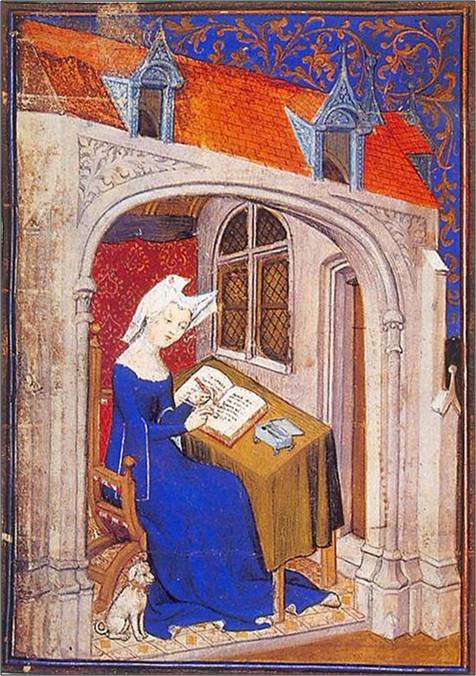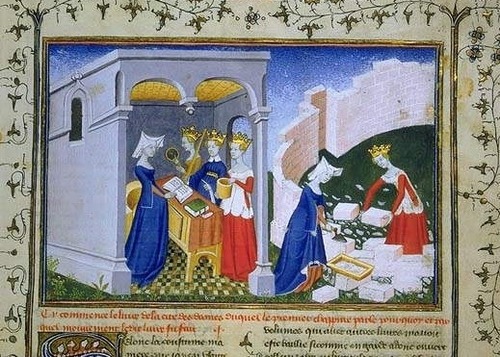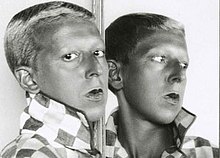Gender, race, class and art history occupy most part of the
course of mankind. And artists of different background have demonstrated a
greater commitment to this course by projecting the unearned privileges that
seem to sustain inequality among people and societies. So art spans the entire history of humankind,
from prehistoric times to the twenty-first century. Nevertheless, Chadwick
notes that “any study of women artists must examine how art history is written”
and it is with strong passion for arts that most of the artists, notably Alice
Barbara Stephens, Mary Ellen Mark, Sofoniba Anguissola, Gertrude Käsebier and
Marina Abramović have embarked on separate artistic agenda to bring to bear
various issues of concern and also to project the role of arts in society
(17). They have for years been
influential in 19th century American Arts- Angels and Tomboys, Woman Behind and
in front of the camera, Renaissance, feminism and performance arts respectively.
Angels & Tomboys: Girlhood in 19th-Century American Art
is a major traveling loan exhibition, which is the first to examine
nineteenth-century depictions of girls in paintings, sculpture, prints and
photographs. The exhibition analyzes the
myriad ways that artists vigorously participated in the artistic and social
construction of girlhood while also revealing the hopes and fears that adults
had for their children. While the sentimental portrayal of girls as angelic,
passive and domestic was the pervasive characterization, this project also identifies
and analyses compelling and transgressive female images including tomboys,
working children and adolescents. In the aftermath of the Civil War, the
American girl seemed transformed—at once more introspective and adventurous
than her counterpart of the previous generation. She took center stage in the
stories of Louisa May Alcott and Henry James at the same moment that
contemporary painters, illustrators, photographers, and sculptors asked her to
pose. For the first time, girls claimed the attention of genre artists, and
girlhood itself seized the imagination of the nation. Although the culture
still prized the demure female child of the past, many saw a bolder type as the
new, alternate ideal. Girlhood was no longer simple, and the complementary images
of angel and tomboy emerged as competing visions of this new generation.
Alice Barber Stephens, 1858 – 1932
Alice Barber was born on a farm near Salem, NJ, where she
attended local schools. The family moved to Philadelphia, and by 1873 she was a
full time student at the Philadelphia School of Design for Women (now Moore
College of Art). There she became proficient at engraving, an important skill
in the days before photo-mechanical reproduction. In 1876 she enrolled at the
Pennsylvania Academy of the Fine Arts, where she studied under Thomas Eakins.
Among her classmates was Emily Sartain. Financial considerations finally forced
her to turn to full-time engraving, but by 1885, the long hours and close work
affected her health. She turned to pen and ink drawing and was soon supporting
herself by illustration in that medium. During a trip to Europe she took up
painting in oils. When she returned, she supported herself with pen and ink
illustration and painted for relaxation.
In 1890 she married another fellow Academy student, Charles
Hallowell Stephens, by this time a teacher at the Academy. She continued to
work as an illustrator, now in color and with a softer effect produced by paint
instead of pen and ink. Her talents were equally effective in the domestic
genre stories then popular in magazines, and with more dramatic illustrations
for works by Conan Doyle. With Emily Sartain, Alice Barber Stephens was one of
the founders of The Plastic club in 1897. She served as vice president every
year from 1897 through 1912. Stephens was also active in the establishment of
the Fellowship of the Academy of fine Arts, and served on the Board for several
years. Her career spanned fifty years, during which time she earned the respect
of her fellow artists, male and female. She was active in lecturing and
teaching, and in demand as a judge of art and photography. There were numerous
exhibitions of her work during her lifetime. In 1984, more than 50 years after
her death, the Brandywine River Museum held an exhibition of her work.
“The woman in Business”, 1897
Rich consumers and the working poor are contrasted in this
powerful grisaille, a painting composed of just black, grey, brown and white.
Set in the cavernous interior of John Wanamaker’s Philadelphia department
store, this scene includes a juvenile shop assistant with a sad, serious and
retired expression in the foreground juxtaposed to a fashionably dressed
shopper reviewing merchandise behind her.
Mary Ellen Mark, Christian Bikers, Arizona, 1988
Finding inspiration in the outer fringes of society,
photographer Mary Ellen Mark is known for her highly humanistic images. Born in
1940 in Philadelphia, Mark attended the University of Pennsylvania earning a
B.F.A in art history and painting and an M.A. in photojournalism. She has won
numerous awards for her work, including the Cornell Capa Award from the
International Center of Photography in 2001. Mark has photographed a diverse
range of subjects, including homeless families, Bombay prostitutes, Seattle
runaways, drug addicts, and the sick. In
stark contrast, Mark has also photographed actors and directors, shooting
primarily on Hollywood movie sets. Many of these images, intended for
reproduction in periodicals, have earned Mark recognition in the media world in
addition to the art world. Shooting primarily in black and white, Mark provides
the viewer a chance to look at other worlds outside their own
Mary Ellen Mark
“Private School, Miami”, 1986
“Sisters-Christian Bikers, Arizona”, 1988
Both photographs by Mary Mark depict adolescent girls from
different parts of the United States. The subjects’ shyness is obvious.
Nonetheless, these girls do not hide their insecurities or mask their
awkwardness. Mark captures their vulnerability, noticeable especially by the
girls wearing their school uniforms; their body language, restrained similes
and stern gazes suggest certain timidity. The two sisters leaning on the
motorcycle convey a tougher appearance and confidence, particularly the girl on
the right. Her piercing eyes, hairstyle and posture grant her a tomboyish look
and she appears as though she owns the vehicle. It is evident from these images
that the photographer established a close relationship to her subjects.
Sofoniba Anguissola- Renaissance Painter
Renaissance movement that took place from roughly 1300 to
1500 also meant “rebirth,” and the term “Renaissance Man” was coined.
“Renaissance Man” is still used to today to describe a person who is creative,
artistic, musical, and worldly and can seemingly be able and willing to do it
all. Not until the sixteenth century did a few women manage to turn the new
Renaissance emphasis on virtue and gentility into positive attributes for the
women artists. Therefore, Guerilla Girls notes that if a “woman wanted to be
work as an artist, she most likely would have had to be born into a family of
nobility” (29). Many women of the Renaissance were illiterate or not well
educated. They couldn’t make their own money and seemed to survive through
marriage and raising a family.
The woman’s role in the Renaissance was to be a
child-bearer, a keeper of the home and a good wife. The family as a unit was
vital to Italian society, and the class system of these families was in full
effect. The Renaissance masters represented the woman’s role in very
interesting and strange ways within their paintings. Even though women were seen as domestic
creatures, rarely were they depicted in domestic settings. Instead, they were
shown as Biblical figures, in high society portraiture or, most interesting of
all, as nudes portrayed in a very sexual manner. These representations are
almost the exact opposite of their daily role and this could be an interesting
examination on the psychology of the Renaissance male artist. It is possible
that the representation of women were projections of what men wanted
Renaissance women to be, or an unconscious rebellion of what society was like
at that time. Whatever the reason, the depictions of women during the
Renaissance are vital to the study of women in art as they reveal the way
Renaissance life was and how women were viewed during these years.
Sofonisba Anguissola was a rare exception and was the best
known of the sisters, she was trained, with Elena, by Bernardino Campi and
Gatti. Most of Vasari's account of his visit to the Anguissola family is
devoted to Sofonisba, about whom he wrote: 'Anguissola has shown greater
application and better grace than any other woman of our age in her endeavours
at drawing; she has thus succeeded not only in drawing, colouring and painting
from nature, and copying excellently from others, but by herself has created
rare and very beautiful paintings'. Sofonisba's privileged background was
unusual among woman artists of the 16th century, most of whom, like Lavinia
Fontana, Fede Galizia and Barbara Longhi, were daughters of painters. Her
social class did not, however, enable her to transcend the constraints of her
sex. Without the possibility of studying anatomy, or drawing from life, she
could not undertake the complex multi-figure compositions required for
large-scale religious or history paintings. She turned instead to the models
accessible to her, exploring a new type of portraiture with sitters in informal
domestic settings. Aristocratic, intelligent, extraordinarily well-connected,
she amazed all her contemporaries. Her self-portraits and portraits of her
family are considered her finest works; they are somewhat stiff, but can have
great charm. Chadwick, in reference to Anguissola maintains, that “the first
woman painter to achieve fame and respect did so within a set of constraints
that removed her from competing for commissions with her male contemporaries
and that effectively placed her within in a critical category of her own” (79).
Being a female artist her achievements were even more extraordinary considering
the social attitudes of her time to the notion of a female as artist.
Sofonisba Anguissola self-portrait 1561
Chadwick notes that “among the small group of documented
self-portraits from the period is a “self-portrait of 1561” depicting the
artists as a “serious, conservatively dressed young woman at the keyboard of a
spinet” and so it evident that a great care was taken to create a self-image
that was reflective of herself (79). Again, the presence of the musical
instrument may show Anguissola’s skills as a member of a cultured noble family
at a time when musical accomplishment, long recognized as desirable for
noblemen and women, was becoming a mark of culture for artists of both sexes.
It is important to note that Anguissola was very influential and has indeed
made a great mark in the arts world. Here, Chadwick states that “ her example
opened up the possibility of painting to women as a socially acceptable
profession, while her work established new conventions for self-portraiture by
women and for Italian genre painting” and this makes one of the leaders in arts
movement (77).
Self Portrait 1554
Not only was Sofonisba Anguissola influential within her
community, but she was one of the first female artists to receive international
renown. Word of her talents spread when she was being taught by one of the most
influential artists of the Renaissance, Michelangelo himself.
Gertrude Käsebier
American, 1852-1934
Gertrude Käsebier was one of the most influential American
photographers of the early 20th century. She was known for her evocative images
of motherhood, her powerful portraits of Native Americans and her promotion of
photography as a career for women. On her twenty-second birthday, in 1874, she
married twenty-eight-year-old Eduard Käsebier, a financially comfortable and
socially well-placed businessman in Brooklyn. Käsebier later wrote that she was
miserable throughout most of her marriage. She said, "If my husband has
gone to Heaven, I want to go to Hell. He was terrible…Nothing was ever good
enough for him.” At that time divorce was considered scandalous, and the two
remained married while living separate lives after 1880. This unhappy situation
would later serve as an inspiration for most of her striking works as a
feminist. Gertrude Kasebier, while studying painting in her late thirties,
shifted her interests to photography. With a minimum of professional training,
she decided to become a portrait photographer and opened a studio in 1897.
Success came very quickly and she was recognized as a major talent by Alfred
Stieglitz who brought her into the Photo-Secessionist group and reproduced a
number of her photographs in the first issue of Camera Work. Gertrude Kasebier,
was well known for her work in portraits, employing relaxed poses in natural
light. She emphasized the play of light and dark, and allowed the sitter to
fill the frame so little room was left in the edges of the photograph. In
addition, Gertrude Kasebier was very creative and talented in the printing
process. Her background in painting gave her the ablility to manipulate the
surface of her photographs producing beautiful images that often have a
painterly quality. The University Gallery at the University of Delaware is the
repository of the largest collegiate collection of Gertrude Kasebier
photographs. Barbara Michaels wrote a book on Gertrude Kasebier in 1991
entitled, Gertrude Kasebier: The Photographer and Her Photographs. Käsebier
generally printed in platinum or gum bichromate emulsions and frequently
altered her photographs by retouching a negative or by rephotographing an
altered print. She was the leading woman pictorialist photographer of her day
and, as a married woman with children who attained success and fame, she became
a model for others, including Imogen Cunningham.
Gertrude Käsebier
“Blessed Art Thou amongst Women”, 1899
Here, two generations are dramatically contrasted. The
mother in a white flowering dress appears as an “angel in the house”, the
Victorian ideal of the true woman who devotes her life to family and
domesticity. She is contrasted to her daughter dressed in black and standing
confidently in the doorway, a symbol of transition. The daughter is about to
leave the security and confinement of home, suggesting a radically different
life than that of her nurturing and subservient mother.
Marina Abramović- Performance Artists
Marina Abramović was born November 30, 1946 in Belgrade,
Serbia and is a New York-based Serbian artist who began her career in the early
1970s. Active for over three decades, she has recently begun to describe
herself as the "grandmother of performance art." Abramović's work
explores the relationship between performer and audience, the limits of the
body, and the possibilities of the mind. To test the limits of the relationship
between performer and audience, Abramović developed one of the most challenging
(and best-known) performances. She assigned a passive role to herself, with the
public being the force which would act on her. As a pioneer of performance art,
Marina Abramović began using her own body as the subject, object, and medium of
her work in the early 1970s. Visitors and art enthusiast are encouraged to sit
silently across from the artist for duration of their choosing, becoming
participants in the artwork. This makes her one of the most engaging artists in
arts and without question one of the seminal artists of our time.
Marina Abramović
“Portrait with Flowers”, 2009.
Black-and-white gelatin silver print
Since the beginning of her career in Yugoslavia during the
early 1970s where she attended the Academy of Fine Arts in Belgrade, Abramovic
has pioneered the use of performance as a visual art form. The body has always
been both her subject and medium. Exploring the physical and mental limits of
her being, she has withstood pain, exhaustion, and danger in the quest for
emotional and spiritual transformation. Abramovic's concern is with creating
works that ritualize the simple actions of everyday life like lying, sitting,
dreaming, and thinking; in effect the manifestation of a unique mental state.
The Guerrilla Girls' Bedside Companion to the History of
Western Art. New York: Penguin, 1998. Print
Chadwick, Whitney. Women, Art, and Society. New York, NY:
Thames and Hudson, 1990.Print.
Newark Museum, Angels and Tomboys, Women in front and behind
the camera
http://www.wga.hu/frames-e.html?/html/a/anguisso/sofonisb/index.html
http://www.wga.hu/frames-e.html?/html/a/anguisso/sofonisb/index.html
http://www.leegallery.com/gertrude-kasebier/gertrude-kasebier-biography
http://www.moma.org/collection/artist.php?artist_id=3008
www.leegallery.com

























